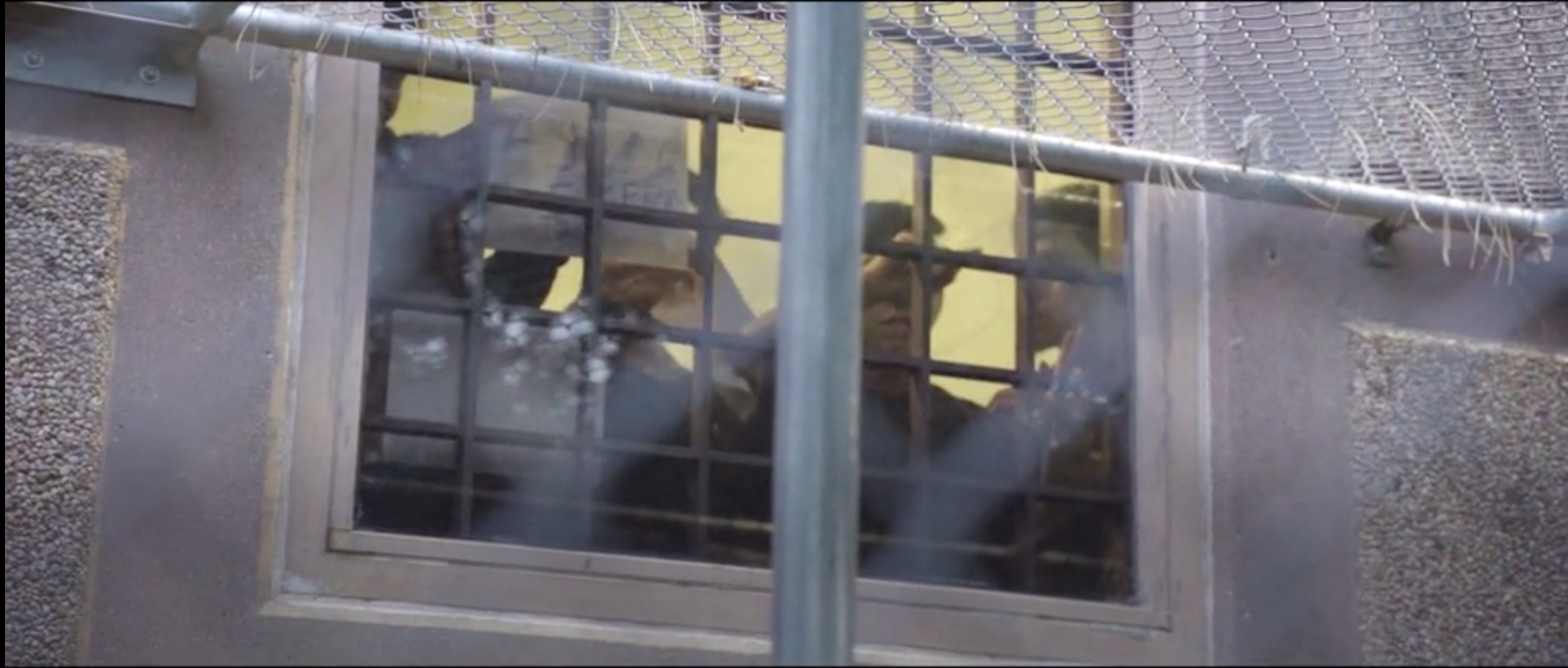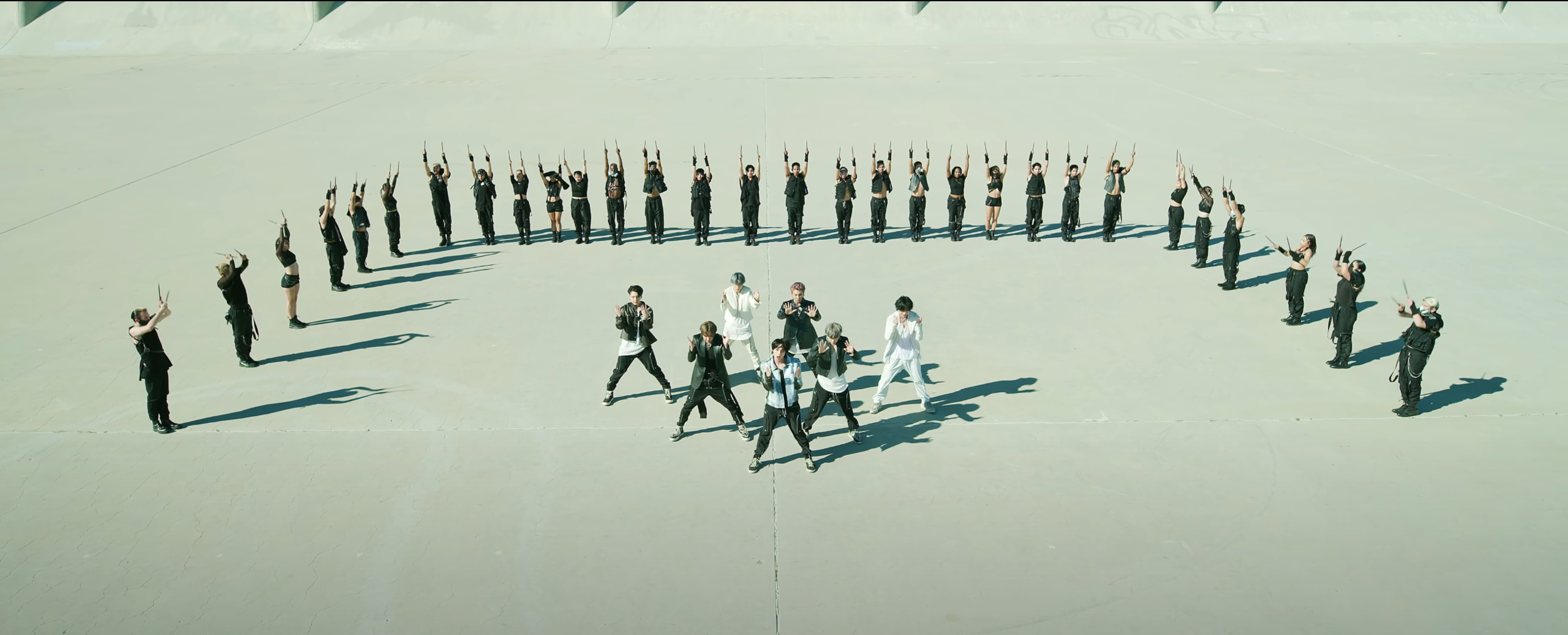THIS IS READING: How art transformed a former steel town

Last year, filmmaker Tony Gerber and playwright Lynn Nottage created a unique site-specific installation in Reading, Pennsylvania – showing the proud inhabitants of this once thriving city in a new light.
The historic Franklin Street railroad station in downtown Reading was once a passage in and out of the city. Serving the railroad from 1930 until 1981, the station sat vacant until 2013 when it was transformed into a modern transit centre to serve both buses and passenger trains. Due to the lack of ridership, services ceased operation shortly after the 2013 opening and the station was once again left empty.
It was not until 2017 that the vacant building was revived to host several showings of This Is Reading, a site-specific installation inspired by the relationship Pulitzer-prize winning playwright Lynn Nottage forged with people of Reading while researching for her critically-acclaimed Broadway play Sweat. Blending live performance and visual media, This Is Reading weaves the individual stories of Reading locals into a compelling visual narrative about the city’s transformation – from once-thriving steel town to one blighted by poverty, crime and economic decline.
GOOD TROUBLE spoke to filmmaker, Tony Gerber to reflect on the multimedia installation, its reception in Reading and beyond, and the role of arts and creativity as catalysts for social change.
Dancer Samantha Shepherd appears on stage in the Franklin Street terminal beneath the 3 channel film "Soars." Credit: Max Acra
- This Is Reading was originally inspired by the research with the people of Reading while Lynn was writing Sweat. Can you explain how that theatre project led to this one which included film, performance and installation?
When the project began it was very much Lynn's brain child. I lent my support as a filmmaker. The shooting we did early on was formless. It made me uncomfortable to film with no understanding of a larger story (none of us knew what Lynn was going to write or what our collaborative “public art piece" was going to look like.) But it turns out that this experience of not knowing and the discomfort of it was an important part of our 3-year process. You might say we filmed as an extension of a thought process or as an act of inquiry. Lynn sometimes reviewed the (observational and interview) footage when she began writing her play Sweat but for the most part we amassed a giant archive of over 40 hours of content which has yet to be edited. It wasn't till we sat in on a meeting of locked-out steal workers that Lynn says she "found the play." It so happens that this meeting in the union hall and the footage that resulted also had a complete-ness from my point of view and we cut a short film out of it. There was a considerable process to arrive at that moment when the lightbulb just lit up.
- You took over the vacant Franklin Street Railroad Station in downtown Reading. What was it like being able to tell these local stories in this location?
When we took over the Franklin Street Station I thought of it conceptually as a once haunted space that had been renovated to within an inch of its life. In the process of renovating it (to turn it into a bus station,) the MTA scrubbed it clean and to my mind exorcized all the spirits (good and bad). With this exorcism gone was the smell of urine, the graffiti, all outward signs of decades of neglect but also gone somehow was the chill you get when you walk into an old building that has witnessed a ton of life. I understand that "chill" as feeling the spirits. Well, the Franklin Street Station that we took over in May of 2017 was scrubbed and neutered of spirit and I felt it was our task to summon back the ghosts in an act of reclamation, a conjuring. The installation made a statement that Reading's downtown corridor was no longer a "no go zone."
Maria works the line in the Sweet Street desert factory in Reading, PA. Still from the film "Behind Closed Doors." Credit: Axel Baumann.
- What was the reaction by the city’s residents to this project in their midst?
People cried. Folks came back multiple times and brought their children. We had access to this incredible documentary called Reading 1974. This observational doc in the manner of early D.A. Pennebaker capture the city poised on the precipice of change. We liberally used experts of this film in the first movement of the performance installation, called "Reading Was." Seeing the section when wrecking cranes dismantle the beautiful turn of the century facades of Penn Street ripped people's hearts out. It was a collective therapy session for the residents of the city as the evening moved from reckoning with the past to a joyous uplifting present/future ("Reading Now"). The emotion after the show was palpable. We captured a lot of these reactions in a "story booth" created as part of the installation (inspired by the work of Story Corps but with the principal difference that we recorded sound and image.) A fine tuned computer algorithm edited a 3 minute clip of all the stories/reminiscence collected in the story booth each night and projected this montage of faces and personal narratives in a movement called, "Reading Speaks." It was different each performance and always featured members of the audience present.
- You recently showed the films in a different context at the Armory in New York.
The films were always intended as part of a larger experience. "Seeing Being Seen" was projected on the train station's north and south facade at night. "Reading Soars" was image-mapped by the great projection designer Jeff Sugg on the ceiling of the train station and accompanied live by choreographer Rennie Harris' dancers and DJ Kashaka (Eli Evnen.) The experience of pulling these films out of context and screening them at the Park Avenue Armory was wonderful and surprising. I was thrilled to see these films in a gallery setting and pleased to see that they held their own.
Three dancers from choreographer Rennie Harris' Puremovement company appear on the streets of the city. Still from the film "Soars". Credit: Market Road Films
- How different was that as an experience, and how did New Yorkers' reactions differ?
You know what I've realized about "New York audiences" from this experience of working in Reading PA is that so many folks in this big city come here from small towns and regional cities like Reading. I can't tell you how many people came up to me (in NY and in Reading) and commented that their hometown was exactly like Reading. This goes for folks from other countries too! There is a universal quality to some of these themes. I think we found a fundamental humanity that transcends race, economics, and geography. Somehow the work spoke to a fundamental human need for community. I mean, goddam, we live today in an age where division is encouraged by our leaders, by our media, and wielded as a political and commercial cudgel. The long-term effects of this strategy is nothing but corrosive. It was a real beautiful takeaway from the experience of the research and execution of This is Reading that community still maters to people. We hope that the work can serve as a new model of civic engagement, (or to quote Joseph Beuys, as a "social sculpture.").
Actor Michael Puzzo watches the film "Behind Closed Doors." Live performance and projection were thoroughly integrated in the installation. Credit: Tony Gerber
- More generally, what do you think the role of arts and creativity is in creating social change?
I feel there is a pervasive cynicism in our culture. Somehow the notion that profit trumps [pun intended] all other life pursuits is a dangerous religion. The fact that we brought This is Reading to a depressed American City with no aim to make a penny blew people's minds. I will never forget the mayor of Reading, Wally Scott, a troll of a man (with a criminal record) look Lynn directly in the eye and say, "I know you're doing this to make money, I'm not sure how but I will figure it out." He couldn't conceive that the reward for us was the creative journey, the desire to give to strangers, and all that we learned in this incredible, exhausting process.
- Do you have plans for the films/installation to find another home beyond this?
There has been talk of bringing Seeing Being Seen to different cities around the world. Nothing is concrete. The idea for these films was inspired by JR's work (in that it's drawn from the community where it's ultimately exhibited) and the jumbo-tron at a sports arena (where people are thrilled to see themselves represented larger than life.) In Seeing Being Seen, the viewer is truly looking directly into the eyes of another sentient being and there is a circuit, a spark that is wrought and passed on. In essence, it's the spark of community...seeing and being seen. Respect for others. We'd love to share this experience with small forgotten cities all over the world.
Author account for the Good Trouble hive-mind.









